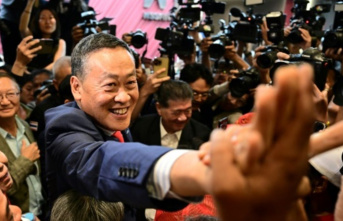Learning a language costs. Effort, time and sometimes also money. But in the XXI century it is not always necessary to study a language to be able to communicate in any part of the world. Just take out the mobile from your pocket, open a translator and write or dictate a sentence. Immediately after, as if by magic, the smartphone translates to almost any language. The translator most popular is Google, which every day is used by millions of users all over the world and is capable of translating more than 100 languages. But behind all of that magic that seems to take place within the terminal there is a trick and it is called artificial intelligence.
To Macduff Hughes, engineering director of Google Translate, the great change in the mode in which they perform the translations are produced in 2016. It was then when Google incorporated a system of automatic translation neural: "The old method of translation worked phrase by phrase and word by word while the new take the complete sentence". “This new system is, paradoxically, much more simple, since the former had in mind a lot of rules about how to join sentences and reorder the words,” explains Hughes, who is not particular the number of employees working in your team.
Google Translate uses patterns of millions of existing translations on the web to help decide the best translation. The number of translations with which it has been trained, the neural network determines the quality of the translation: “the more data we have, the better the translation." Therefore, when you decide to add a language to the translator, the first step is to ensure that there is on the web a set of reliable data to train the system.
"We have to ask whether there is enough data to create a model that meets our quality standards. If there is, we can usually develop in a few months”, she explains. When two languages are very different from each other, requires a larger amount of data. For example, grammatically the English language is very different from the chinese and the japanese, so you will need a greater amount of information to get the same quality to make a same translation from English to Spanish.
To ensure that the data set with which to train the system is of good quality, Google has readers human. Although Hughes warns: "The quality is important, but the quantity always wins in the long term." While the European Union “has done a wonderful job by providing the world translations because many documents have to be translated by law to other languages, not all languages have the same luck. There is, as acknowledged by Hughes, "an imbalance between the languages represented in the translator and the amount of speakers that there are in the world."
"We have to ask whether there is enough data to create a model that meets our quality standards. If there is, we can usually develop in a few months”
in Addition to the quality and the quantity, it is also important that the web sites translated to treat a wide range of topics. “The websites of travel have many translations and we become very good at translating things on trips, but not so much when, for example, it is of botany," explains Hughes at an event in Zurich on artificial intelligence that THE COUNTRY has been invited by Google. In addition to this, the majority of translations available in the web are carried out in a professional context. The registry used, therefore, differs from the way in which users actually speak in their day-to-day.
Bias and error of translation
When the translations are not accurate, some users alert Google through messages or on social networks. Workers may also make a report promptly any error. “We do not fix every incorrect translation because we like to be as strictly algorithmic as possible and let the model do its job, but yes sometimes we do this when a translation is offensive or misleading and can cause some kind of damage,” he explains.
Hughes remembers a translation error in June. In the midst of the protests in Hong Kong, the system translated the phrase "I am sad to see Hong Kong become part of China," to "I'm happy to see Hong Kong become part of China." That is to say, the translation suggested in simplified chinese and traditional chinese became the word "sad" to "happy". The error, which caused a stir among various users, was corrected the same day.
These errors are not the only problem they have to face the company. The translator is sexist. For example, assume that the “doctor” is a doctor man. Meanwhile, “to nurse” is a nurse woman. Hughes acknowledges that in order to solve this there is still work to do: “The basic design of the systems of machine learning is to find the most likely answer. But when you do this millions of times, you're reinforcing some social stereotypes”.
To combat this type of bias, Google Translate tries to show multiple options of gender when there are. The aim is that this function, which today is only available for some words in other languages such as Spanish, French or Portuguese, to reach all the languages in the future.
Other challenges
The engineering director of Google Translate looks likely that in the future two people who speak different languages can have a conversation entirely natural in real-time: "I Think that all of the necessary pieces are there. We just need some improvements in the voice recognition to work in noisy environments, the quality of the translation, the understanding of the context and in the step of text-to-speech to sound more natural”.
do You become the translator of Google to be an alternative to the learning of languages? Hughes, who knows German and a little Spanish and welsh, it considers that it is "a different experience". "To travel and use the translator it is much easier to learn a language, but learning a language is a very rewarding experience and there is a lot you can do if you're really able to talk about it", he adds.
One of the goals of his team is to develop models that can be trained with a much smaller amount of data. To learn a language “you do not need to see a billion prayers”, but it can worth with “a few thousand examples, and a dictionary". Get a translation continuously and totally snapshot —the system begins to translate even before the user has finished the prayers— and to achieve the translation of multiple languages with a single neural network are also some of the main challenges.
The current systems serve for up to five or eight languages. "In our laboratories we are trying to get a model which is adequate for the 103 languages", account. But in the world there are many more languages than it currently supports the Google translator —it is estimated that around 7,000—: "Our great hope is to develop models that can generalize what it means to understand and learn a language and, with luck, to go from the hundreds to the thousands of languages".
artificial Intelligence to detect ‘spam’
The artificial intelligence is not only behind the Google translator. It is also present in the emails of the users to detect spam or in the keyboards of their mobile phones to make predictions. With this technology, are being pursued in addition to goals much more ambitious. The company from Mountain View has different projects to ease the life of people with disabilities. For example, Lookout is an app that assists people who are blind or visually impaired and provides them with information of what is around them. It also develops applications and devices that enable people with speech difficulty to communicate. Google, like other companies such as Microsoft, also uses artificial intelligence to find solutions to the environmental challenges of the planet. For example, to monitor the marine life, the fight against illegal fishing, to take control of different animals in danger of extinction or predict natural disasters.
Amnesty International accuses Google of stifling human rights
Amnesty International accuses in his latest report, Giants of the surveillance Google and Facebook threaten the human rights with their business model. For the organization, this model is based on the surveillance, and is "intrinsically incompatible" with the right to privacy. The company of Mountain View collects a huge amount of data of the users: know everything that a user is purchasing over the Internet, the places you visit, the apps you use and even the porn that you see —even if you do it in incognito mode—. Olivier Bousquet, chief engineer of the Google AI Europe, denies any form of monitoring and castling on that Google account with the consent of the users: “The question is: do you know or have access to the information you are collecting? The user can check on the web what data to collect and have control over them.” In addition, it ensures that the data is always used with a specific purpose and the user has to be informed of what to do with them. “Consent is not enough if you don't have transparency,” he concludes.
Date Of Update: 26 December 2019, 06:01










